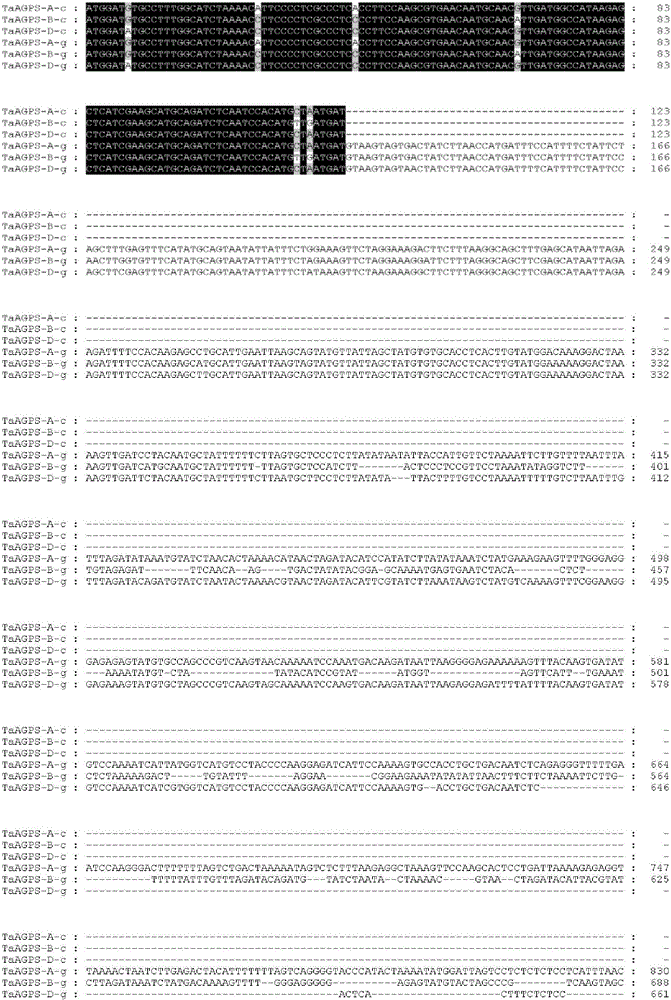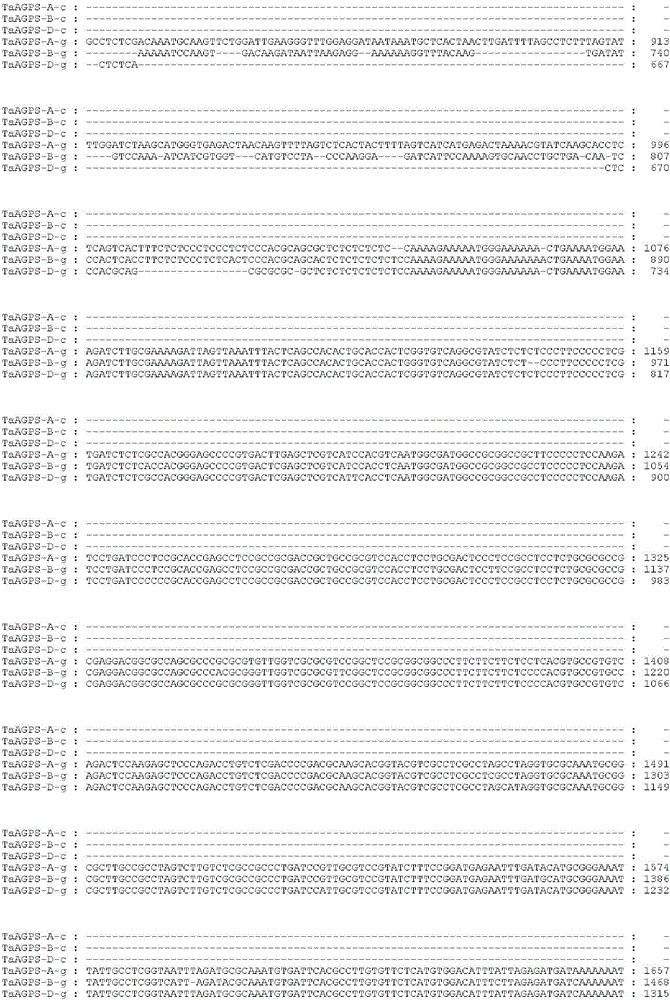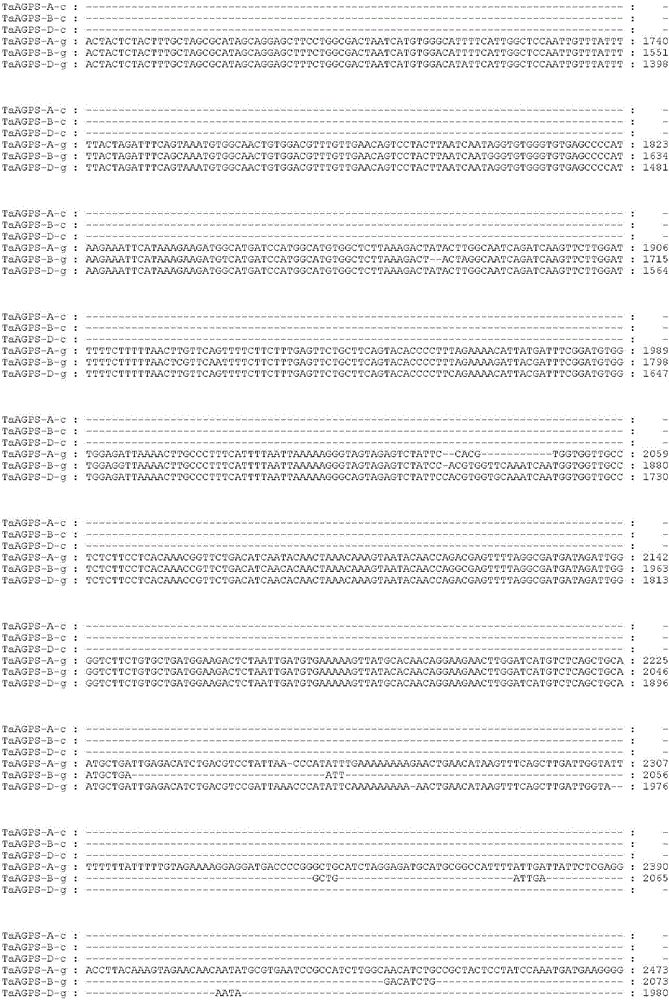Method for detecting TaAGPS gene allelic variation relevant to thousand kernel weight
An allelic variation and 1000-grain weight technology, applied in the field of in situ variation, can solve the problems of reduced endosperm starch accumulation, no instantaneous starch synthesis, and reduced AGPase enzyme activity, achieving the effect of easy operation.
- Summary
- Abstract
- Description
- Claims
- Application Information
AI Technical Summary
Problems solved by technology
Method used
Image
Examples
Embodiment 1
[0033] Embodiment 1, different 1000-grain weight materials TaAGPS gene sequence difference analysis
[0034] 1. Primer design
[0035] By using MegAlign software to compare the genomic DNA sequences and cDNA sequences on different chromosomes of common wheat Chinese spring TaAGPS, it was found that these gene sequences have the following characteristics: (1) Three homologous genes TaAGPS-7A, TaAGPS- 7B and TaAGPS-7D have some SNP polymorphisms in the exon region; (2) The exon and intron-dense regions of the three homologous genes TaAGPS-7A, TaAGPS-7B and TaAGPS-7D are distributed in the back of the gene half ( figure 1 ). Therefore, we proposed a scheme to analyze the difference of TaAGPS gene sequence in different 1000-grain weight materials: select the second half region covering the exon and intron-intensive regions of TaAGPS gene to design intergenic conserved PCR primers, and obtain them by gene cloning. Contains the sequence information of different TaAGPS genes, thro...
Embodiment 2
[0050] Embodiment 2, detection of other wheat varieties TaAGPS gene allelic variation
[0051] By comparing the sequence differences of the two alleles, it was found that, compared with the high thousand-grain weight allele, the low thousand-grain weight allele TaAGPS-7A-T contains A DdeI endonuclease site (CTCAG), but the high thousand-grain weight allele TaAGPS-7A-G (CGCAG) has no such endonuclease site. Therefore, according to the SNP at position 5092, a CAPS marker using DdeI endonuclease as a tool was developed to distinguish the two allelic variants of TaAGPS-7A. For the convenience of operation, the conservative primer pair (SEQ ID No: 1 and SEQ ID No: 2) was used to amplify a 636bp fragment containing three homologous genes. After digestion with DdeI, the TaAGPS-7A-T type produced 234bp and 402bp Two short fragments, while no short fragments were produced for the TaAGPS-7A-G type. After electrophoresis in 2% agarose gel, two allelic variations of TaAGPS-7A-G and TaAG...
PUM
 Login to View More
Login to View More Abstract
Description
Claims
Application Information
 Login to View More
Login to View More - R&D
- Intellectual Property
- Life Sciences
- Materials
- Tech Scout
- Unparalleled Data Quality
- Higher Quality Content
- 60% Fewer Hallucinations
Browse by: Latest US Patents, China's latest patents, Technical Efficacy Thesaurus, Application Domain, Technology Topic, Popular Technical Reports.
© 2025 PatSnap. All rights reserved.Legal|Privacy policy|Modern Slavery Act Transparency Statement|Sitemap|About US| Contact US: help@patsnap.com



